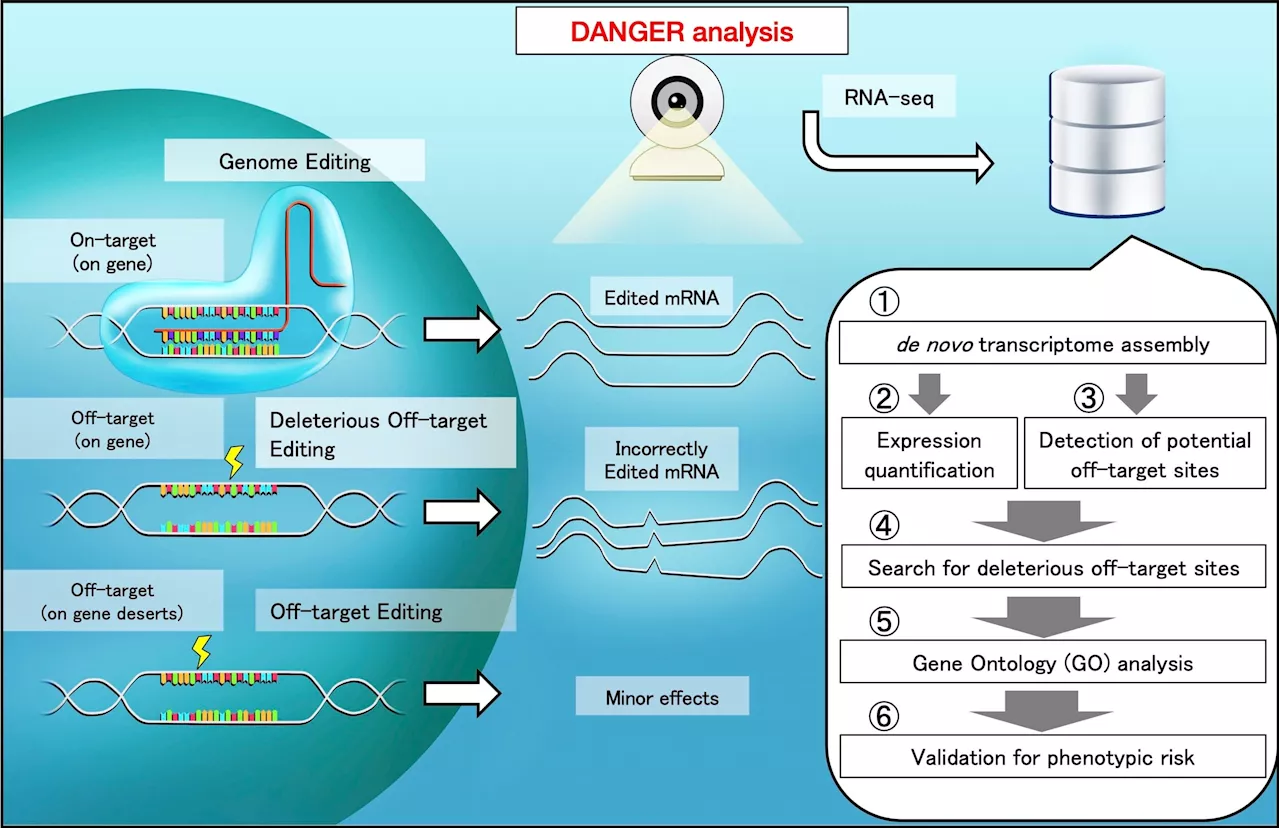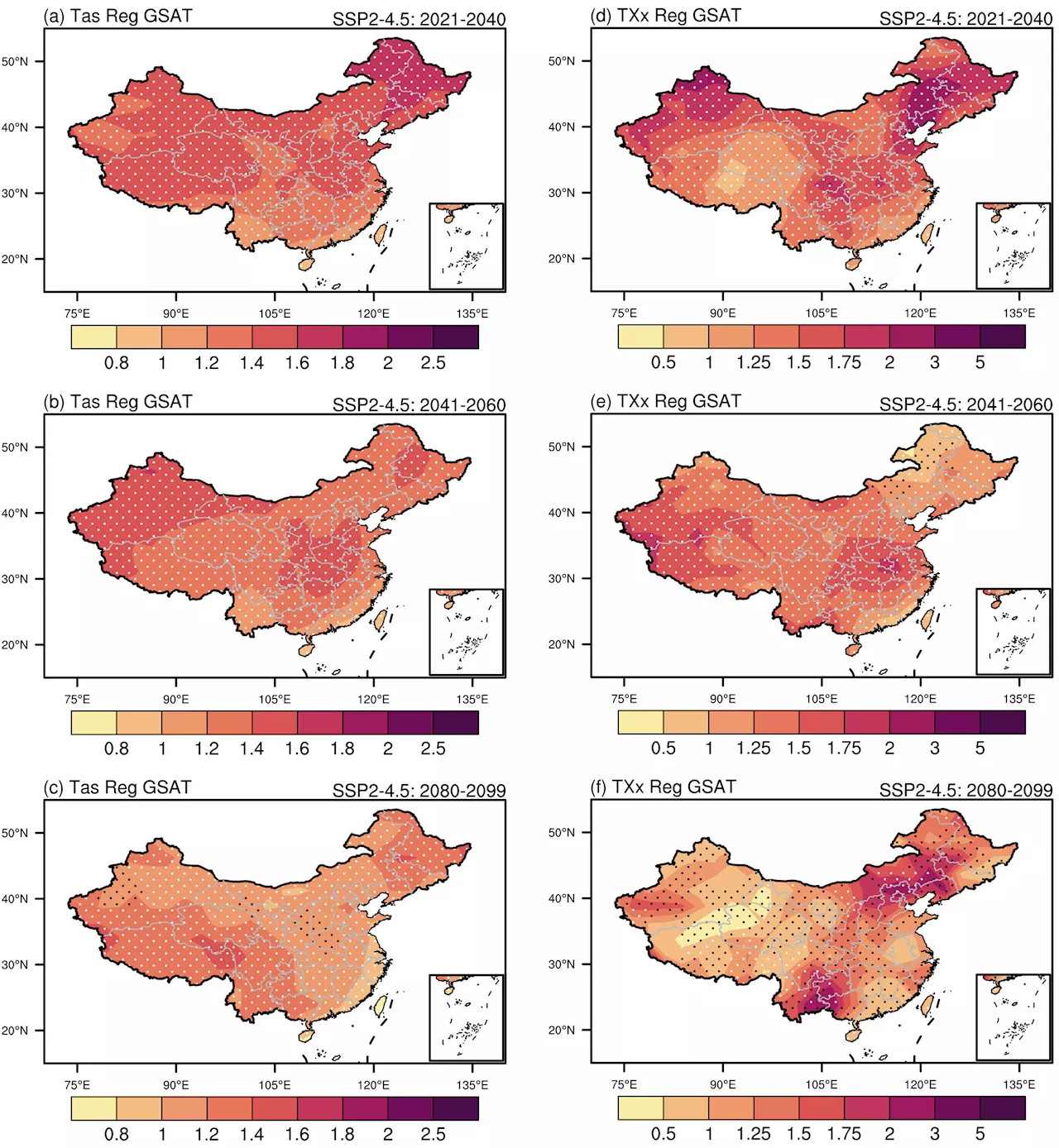A team of researchers has developed a software tool that provides a way for the safer design of genome editing in all organisms with a transcriptome. For about a decade, researchers have used the CRISPR technology for genome editing. However, there are some challenges in the use of CRISPR.
The new analysis system overcomes these challenges and allows researchers to perform safer on- and off-target assessments without a reference genome. It holds the potential for applications in medicine, agriculture, and biological research.A team of researchers has developed a software tool called DANGER analysis that provides a way for the safer design of genome editing in all organisms with a transcriptome. For about a decade, researchers have used the CRISPR technology for genome editing.
A second challenge is that the CRISPR technology generally depends on basic genomic data, including the reference genome. The reference genome is like a template that provides researchers with general information on the genome. Unexpected sequence editing with mismatches can occur. These off-target sites are always unexpected. So researchers need a way to observe factual genomic sequences and limit potential off-target effects.
The team demonstrated that the DANGER analysis pipeline achieves several goals. It detected potential DNA on- and off-target sites in the mRNA-transcribed region on the genome using RNA-sequencing data. It evaluated phenotypic effects by deleterious off-target sites based on the evidence provided by gene expression changes. It quantified the phenotypic risk at the gene ontology term level, without a reference genome.
DANGER analysis is open-source and freely adjustable. So the algorithm of this pipeline could be repurposed for the analysis of various genome editing systems beyond the CRISPR-Cas9 system. It is also possible to enhance the specificity of DANGER analysis for CRISPR-Cas9 by incorporating CRISPR-Cas9-specific off-target scoring algorithms. The team believes that the DANGER analysis pipeline will expand the scope of genomic studies and industrial applications using genome editing.
United States Latest News, United States Headlines
Similar News:You can also read news stories similar to this one that we have collected from other news sources.
 Researchers develop DANGER analysis tool for the safer design of gene editingA team of researchers has developed a software tool called DANGER (Deleterious and ANticipatable Guides Evaluated by RNA-sequencing) analysis that provides a way for the safer design of genome editing in all organisms with a transcriptome.
Researchers develop DANGER analysis tool for the safer design of gene editingA team of researchers has developed a software tool called DANGER (Deleterious and ANticipatable Guides Evaluated by RNA-sequencing) analysis that provides a way for the safer design of genome editing in all organisms with a transcriptome.
Read more »
 Harnessing heat-induced floral overexpression using CRISPR techniquesPlant migration and gene flow from genetically modified or invasive plant species to wild relatives is a major public and regulatory concern. To counteract potential spread, various strategies have been developed, ranging from identifying naturally sterile plants to engineered sterility via gene editing.
Harnessing heat-induced floral overexpression using CRISPR techniquesPlant migration and gene flow from genetically modified or invasive plant species to wild relatives is a major public and regulatory concern. To counteract potential spread, various strategies have been developed, ranging from identifying naturally sterile plants to engineered sterility via gene editing.
Read more »
 Researchers develop new mechanism to create water-repellent surfacesResearchers have developed a new mechanism to make water droplets slip off surfaces, and describe it in a paper published in Nature Chemistry. The discovery challenges existing ideas about friction between solid surfaces and water and opens up a new avenue for studying droplet slipperiness at the molecular level.
Researchers develop new mechanism to create water-repellent surfacesResearchers have developed a new mechanism to make water droplets slip off surfaces, and describe it in a paper published in Nature Chemistry. The discovery challenges existing ideas about friction between solid surfaces and water and opens up a new avenue for studying droplet slipperiness at the molecular level.
Read more »
 Researchers correct overestimation by 'hot model' climate projections on warming in ChinaChanges in mean temperature and temperature extremes at regional scale under a warmer climate have received much attention. A subset of CMIP6 climate models, known as 'hot models,' have been projecting more significant warming due to greenhouse gases.
Researchers correct overestimation by 'hot model' climate projections on warming in ChinaChanges in mean temperature and temperature extremes at regional scale under a warmer climate have received much attention. A subset of CMIP6 climate models, known as 'hot models,' have been projecting more significant warming due to greenhouse gases.
Read more »
 Coin tosses are not 50/50: Researchers find a slight biasWant to get a slight edge during a coin toss? Check out which side is facing upwards before the coin is flipped –- then call that same side.
Coin tosses are not 50/50: Researchers find a slight biasWant to get a slight edge during a coin toss? Check out which side is facing upwards before the coin is flipped –- then call that same side.
Read more »
 Researchers study fast-moving black hole to better understand formation of black hole binariesUMass Dartmouth Ph.D. students Tousif Islam (lead author) and Feroz H.
Researchers study fast-moving black hole to better understand formation of black hole binariesUMass Dartmouth Ph.D. students Tousif Islam (lead author) and Feroz H.
Read more »
